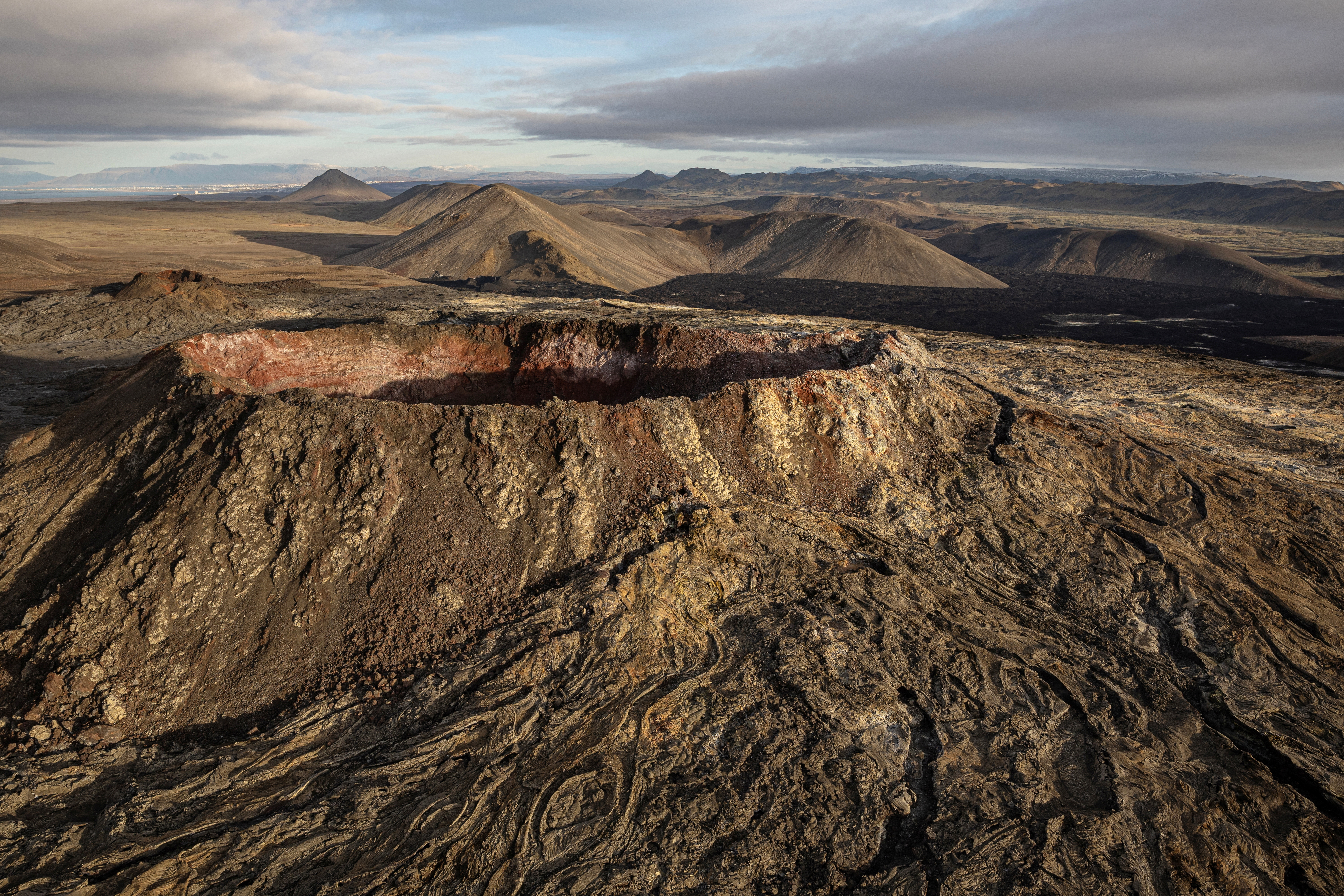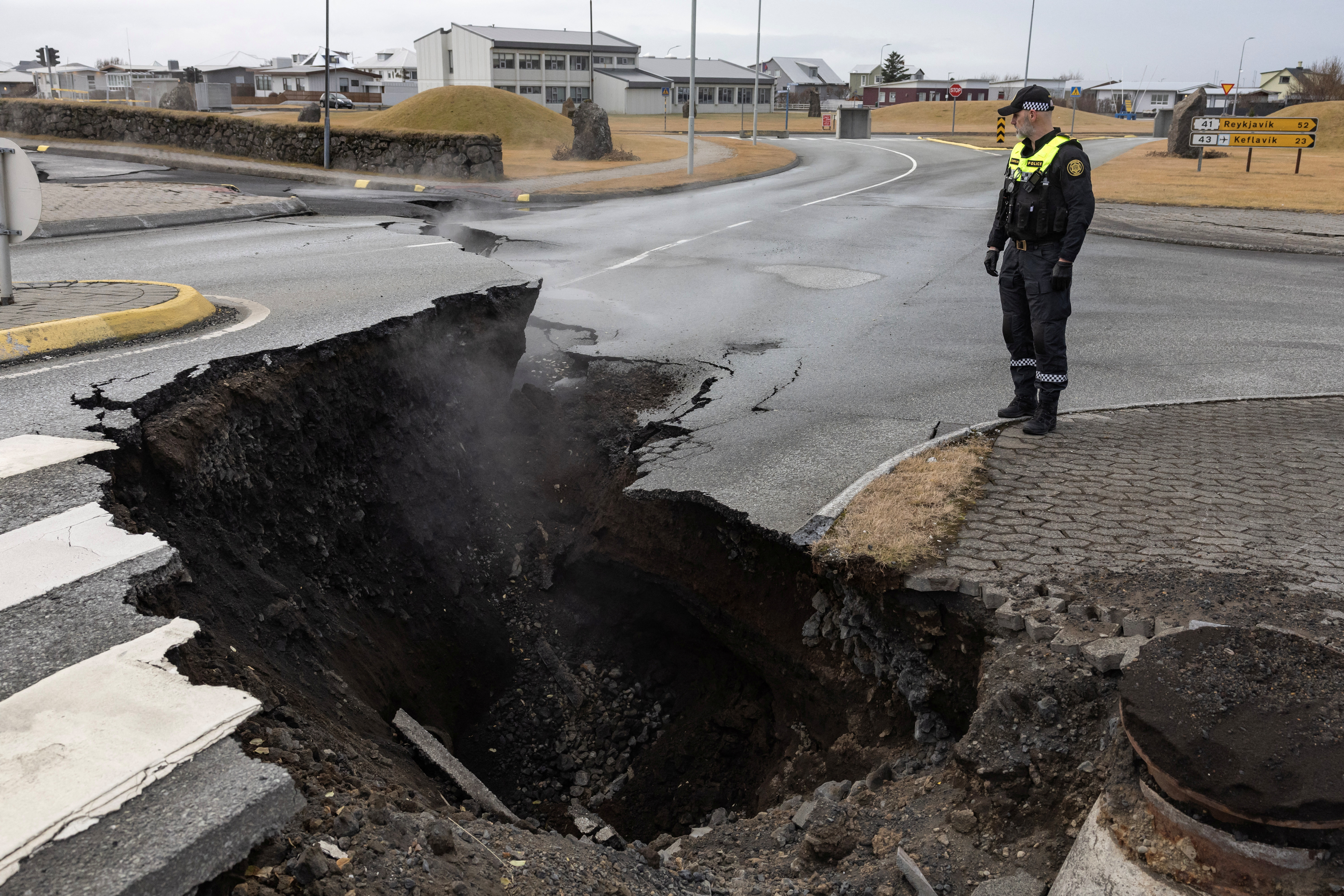
In anticipation of a major natural disaster, authorities have put in place key measures to limit the damage and protect infrastructure and civilians. /Marko Djurica/Reuters
In anticipation of a major natural disaster, authorities have put in place key measures to limit the damage and protect infrastructure and civilians. /Marko Djurica/Reuters
Iceland's authorities are bracing for a volcanic eruption on the country's southwestern Reykjanes peninsula. Authorities have lowered the threat level in Grindavik, allowing residents to return for several hours, with the expected eruption site being moved a few kilometers away from the town. CGTN looked into the measures the government is taking to prevent a disaster.
Protective walls
"We are building the big wall for the new lava," Armann Gardarsson told CGTN while checking in for his night shift in the volcano danger zone. Using Iceland's hard lava soil, he and his team are erecting walls around the Reykjanes power plant to protect it from the expected lava flows.
Justice Minister Guðrún Hafsteinsdóttir says damage to the plant could create a major problem for the region, because it's the peninsula's only energy source.
"There is not an alternative now for the power plant in Reykjanes," he said. "But we have been working on solutions, what to do. But we would be forced to use oil or gas as people are using in Europe or other countries, which we are not used to, and we don't have the infrastructure for that," she told CGTN after a press conference on Monday.
Strict construction code
One of Iceland's most effective measures against volcanic and seismic damage is the country's extremely strict construction code. Fortified foundations and steel reinforced concrete columns have enabled tall buildings to withstand numerous earthquakes.
So far, that construction code has succeeded in preventing disaster. When the earthquake sliced the Reykjanes town of Grindavik in two, not a single building collapsed.

A police officer stands by the crack in a road in the fishing town of Grindavik, which was evacuated due to volcanic activity./Marko Djurica /Reuters
A police officer stands by the crack in a road in the fishing town of Grindavik, which was evacuated due to volcanic activity./Marko Djurica /Reuters
Thirty minutes notice to alert population
Benedikt Ofeigsson and his fellow scientists at Iceland's MET office are closely monitoring what is going on inside the crack as well as underneath the power plant. "We are setting up GPS stations looking at deformation, others might be setting up seismic stations," he told CGTN.
His team also monitors volcanic gases and maps how things have changed. All of this to alert the population at least 30 minutes before the eruption. A time window which is essential in order to evacuate emergency teams and wall construction workers present in the danger zone.
Water cooling
Recent considerations by authorities include the possibility of pouring water onto the rising magma before it reaches the surface. Cooling the volcanic material could make it hard and prevent further damage. This measure has been applied elsewhere but whether it will be used in Reykjanes remains unclear.

Subscribe to Storyboard: A weekly newsletter bringing you the best of CGTN every Friday